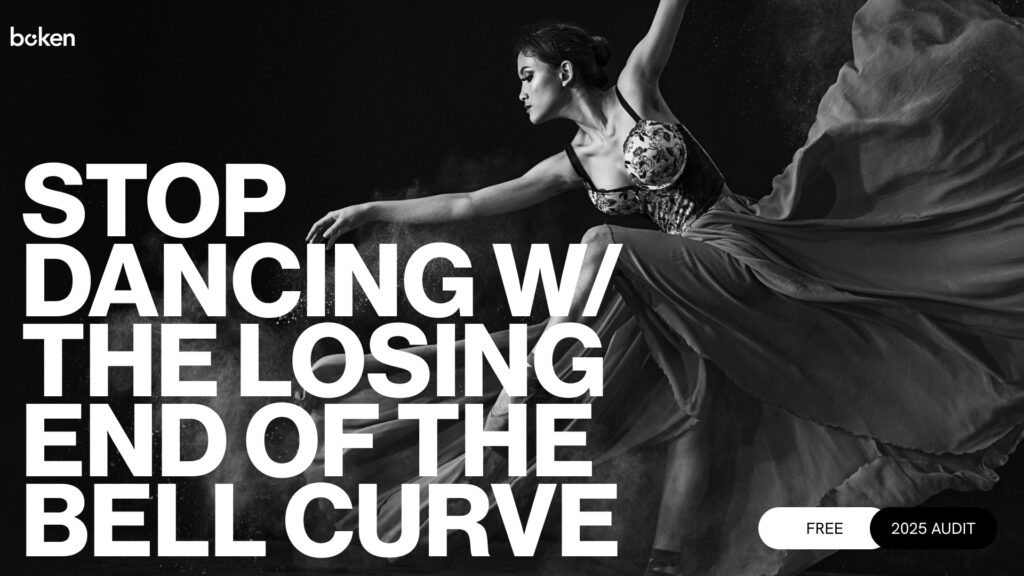How to Spot the Warning Signs and Act Now
For leaders of businesses, nonprofits, and other organizations, success often feels like a mountain climb. Yet, as you reach the summit, a hidden danger looms: the bell curve. Every thriving entity follows this natural arc—early struggles, rapid growth, peak performance, and then, inevitably, decline.
The harsh truth is that the peak isn’t the end of the journey—it’s the most precarious point. Without vigilance and action, organizations begin their descent, often without even realizing it. Studies reveal that 70% of organizational change initiatives fail, with many of these failures linked to leaders misreading the signs of decline or reacting too late. Could this be happening to you?

Understanding the Bell Curve
The bell curve represents the lifecycle of organizations, products, and even leadership teams:
- Start-Up Phase: Building momentum.
- Growth Phase: Rapid expansion and rising success.
- Maturity Phase: Plateauing but stable performance.
- Decline Phase: Decreased relevance, morale, and results.
It’s tempting to linger at the peak, enjoying the fruits of your labor. But the moment you stop evolving is the moment you start sliding into irrelevance.
The Hidden Signs of Decline
Recognizing you’re nearing the decline stage of your bell curve isn’t always obvious. Leaders often miss these early warning signs:
1. Stagnation in Innovation
When was the last time your team brought a bold, new idea to the table? Stale strategies or reliance on legacy successes can signal trouble. A McKinsey study found that 84% of executives believe innovation is critical to growth, yet only 6% are satisfied with their innovation performance.
2. Eroding Culture
Does your team still feel engaged, or have meetings become routine checklists? Gallup reports that disengaged employees cost U.S. companies $450 billion to $550 billion annually. If morale is low, the decline has already begun.
3. Leadership Complacency
Are you and your team stuck in a “good enough” mindset? Leaders often fail to realize that comfort is the silent killer of greatness. Resting on past achievements blinds you to future opportunities and threats.
4. Lagging Metrics
Sales flatten, donor engagement declines, or productivity slows. While you might chalk it up to market conditions, Harvard Business Review highlights that declining performance is often a reflection of internal weaknesses rather than external pressures.
5. Resistance to Change
Does your organization push back against new technologies or strategic pivots? Resistance often signals a culture unwilling to adapt—a surefire path to decline.
Why Leaders Fear Addressing Decline
Acknowledging decline is uncomfortable. It can feel like admitting failure or opening Pandora’s box of blame. Many leaders fear shaking up the status quo, believing the fallout could be worse than the problem.
But the real danger is inaction. Decline doesn’t just affect numbers; it erodes trust, reputation, and your ability to lead effectively. A failure to act not only jeopardizes the organization but also the people who rely on it.
What You Can Do About It
If you recognize the warning signs, the good news is that decline isn’t irreversible. Here’s how to take action:
1. Get Honest About Reality
The first step is brutal honesty. Take a hard look at your numbers, culture, and leadership dynamics. Are you coasting, or are you actively pursuing growth? Tools like the Entrepreneurial Operating System (EOS) can help you assess and align your organization’s vision, goals, and execution.
2. Reignite Innovation
Focus on what’s next. Encourage experimentation, reward creativity, and prioritize resources for innovation. Consider creating cross-functional teams to brainstorm and implement new strategies.
3. Invest in Leadership Development
Great leaders anticipate change and adapt quickly. Using frameworks like Giant Worldwide, you can develop self-aware, adaptive leaders who empower their teams and foster resilience.
4. Revisit Your Mission and Vision
Organizations in decline often lose sight of their “why.” Reconnect with your core mission and align your strategies with it. Simon Sinek’s Golden Circle model emphasizes that clarity of purpose drives sustainable success.
5. Establish Accountability
Accountability ensures that strategy turns into action. Use clear metrics and regular check-ins to track progress. The EOS framework excels at creating a culture of accountability, giving every team member ownership of results.
6. Stay Open to Outside Help
Sometimes, you’re too close to the problem to see solutions. Bringing in a fresh perspective—like an EOS Implementer or Giant coach—can provide clarity, structure, and actionable steps to reverse the decline.
The Consequences of Inaction
Failing to address decline can lead to far-reaching consequences:
- Loss of Market Share: Competitors fill the void left by your stagnation.
- Employee Turnover: Talented employees don’t stick around for sinking ships.
- Eroded Reputation: Clients, donors, or partners lose confidence in your leadership.
Take, for example, Kodak, which ignored the shift to digital photography, or Blockbuster, which dismissed Netflix’s model. These once-dominant companies crumbled because they failed to respond to the signs of decline.
A Time for Courage
Leadership isn’t just about basking in success; it’s about making tough decisions when the stakes are high. The bell curve is inevitable, but decline is not. Recognizing your proximity to the downturn requires courage, humility, and a willingness to act decisively.
As a leader, ask yourself:
- Are we still climbing, or have we started coasting?
- Do we have the right tools, systems, and people in place to navigate change?
- What would happen to our organization, employees, and mission if we continue as we are?
The Way Forward
You don’t have to navigate this alone. Tools like EOS and Giant’s leadership frameworks are designed to help leaders like you identify challenges, reset priorities, and guide your organization back to the upward curve. Whether it’s aligning your vision, reigniting innovation, or fostering a culture of accountability, there’s a proven path forward.
The real question is: Will you take it?
In the words of author Jim Collins, “Good is the enemy of great.” Don’t settle for good when greatness is still within reach. Spot the signs, make the call, and lead with purpose. Your organization—and everyone who depends on it—is counting on you.
Don’t dance around the edge of the failure end of the bell curve. Book a 15-minute meeting, and let’s get you climbing again.

